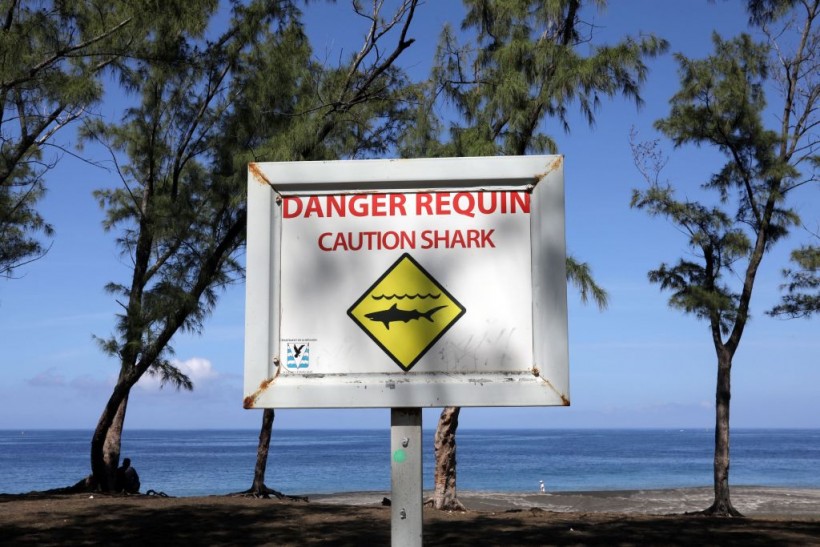Researchers from Louisiana State University and the University of Florida conducted a new study on the relationship between shark attacks and the phases of the moon. They used nearly 50 years of data on shark attacks and found that humans are being attacked more often during the fuller phase of the moon.
In their study, titled "Shark Side of the Moon: Are Shark Attacks Related to Lunar Phase?," published in Frontiers in Marine Science, researchers wrote that all instances of shark attacks more often happened at more than 50% lunar illumination and lesser attacks at less than 40% lunar illumination.

This picture was taken on March 1, 2019, shows a sign warning on the danger of shark attacks at the L'Etang-Sale beach, on the Indian Ocean island of La Reunion./div>
Why Are There More Shark Attacks During Fuller Moon Phases?
According to Earth.com, the data of shark attacks used in the study was between 1960 to 2015. It revealed an unmistakable correlation between shark attacks and moon phases. However, it is unclear what caused the phenomenon.
Study co-author Steve Midway from LSU explained that it is not a matter of more light at night that there are more shark attacks. He noted that there are more shark attacks during the day.
Although it might have something to do with other factors, he added that the Moon could exert other forces on Earth and its waters in ways that are much more subtle, such as the gravitational pull that affects the tides.
Professor Midway and his colleagues said that it is still early to claim a causal event between lunar illumination and shark attacks since they may not be causal. The researchers do not claim any immediate risk management benefits that may arise from the finding. But it contributes to a better understanding of shark behavior that may help in the future.
He emphasized that moon phase and lunar illumination are not a strong predictor of shark attacks because other factors, such as local environment variables, contribute to more practical information in assessing the risk of humans getting attacked by sharks.
On the other hand, the findings support the idea that the moon phase plays a role in shark behavior. For future reference, the findings and considering local and regional environmental conditions may be used to improve forecasting risk.
ALSO READ: White Shark Attacks Caused By Natural Handicap and Mistaken Identity, Study SaysHow Often Do Shark Attacks Happen?
Despite the misleading media reports that shark attacks have been increasing, wildlife experts said that these events are extremely rare and even more rarely fatal.
For instance, the International Shark Attack File of the Florida Museum of Natural History reported that it investigated 129-alleged shark-human interactions worldwide in 2020, in which 57 are confirmed unprovoked shark bites and 39 provoked attacks.
Britannica reported that despite the increasing number of recorded shark attacks in recent years, the rate per capita is still low. The attacks could also be explained as a massive population explosion. When more people spend time in the water, it also creates more opportunities for being exposed to the risk of an encounter with sharks.
Wildlife experts are developing far more effective methods of cataloging and documenting these shark-human interactions to understand why these run-ins occur in the first place even if they are rare.
RELATED ARTICLE: Former Fashion Executive Killed in a Shark Attack in Maine
Check out more news and information on Shark Attack in Science Times.














